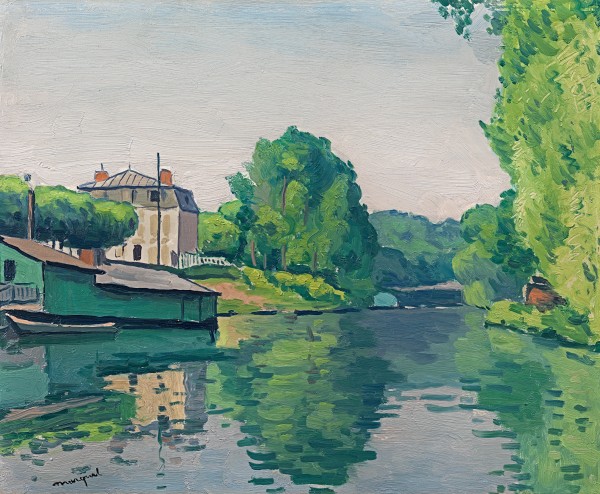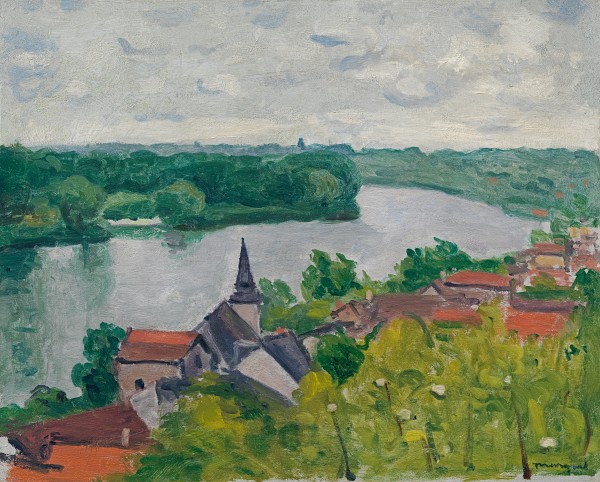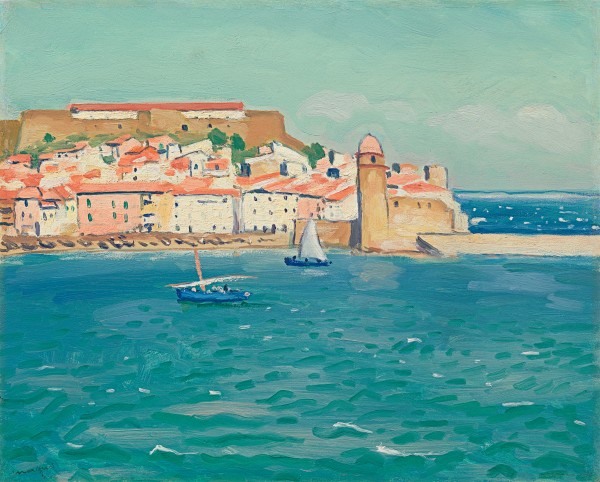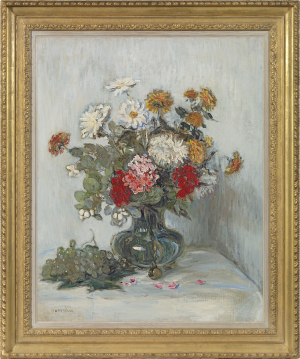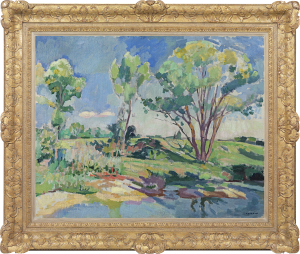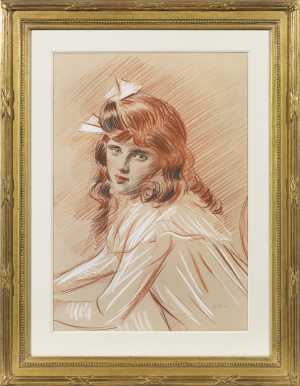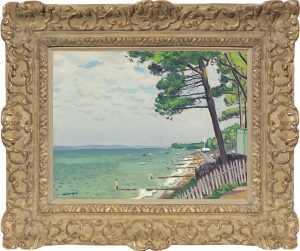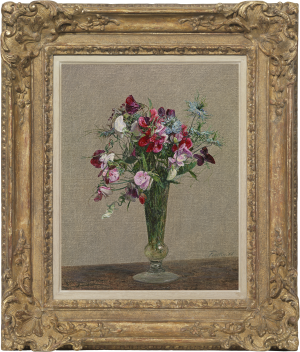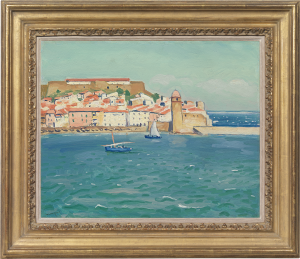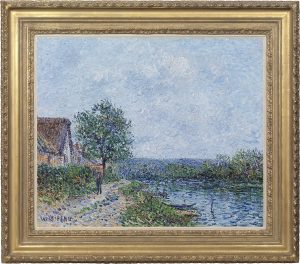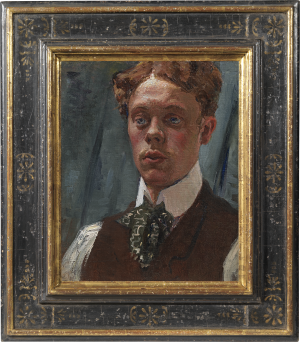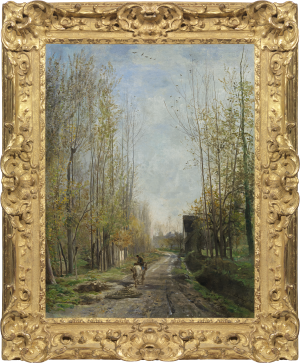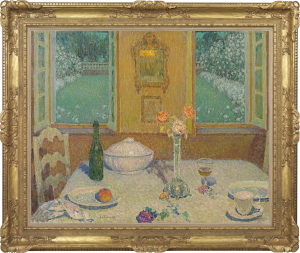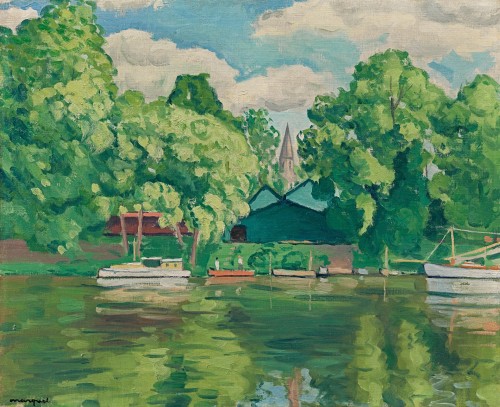
Click on image to enlarge
Albert Marquet
Poissy, le clocher
Oil on canvas: 19.5 x 24 (in) / 49.5 x 61 (cm)
Signed lower left: marquet
This artwork is for sale.
Please contact us on: +44 (0)20 7493 3939.
Email us
ALBERT MARQUET
Bordeaux 1875 - 1947 Paris
Ref: CC 120
Poissy, le clocher
Signed lower left: marquet
Oil on canvas: 19 ½ x 24 in / 49.5 x 61 cm
Frame size: 29 ½ x 34 in / 74.9 x 86.4 cm
Painted in 1929
Provenance:
Galerie Bernheim-Jeune, Paris, acquired from the artist on 12th November 1929; Galerie Georges Petit, Paris, acquired from the above on 20th December 1929; Galerie M Bénézit, Paris; P Guillaumeron, acquired from the above in December 1963;
by descent in a private collection, France Hôtel Drouot, Paris, 17th October 1990, lot 39 Hôtel des Ventes, Arles, 7th July 1991, lot 195 Hôtel des Ventes, Neuilly-sur-Seine, 20th October 1991, lot 164 Palais de l’Europe, Le Touquet, 30th May 1993, lot 103 Christie’s London, 22nd June 2005, lot 177 Galerie Nichido, Paris; acquired from the above by a private collector, Europe
To be included in the forthcoming Digital Catalogue Raisonné of the work of Albert Marquet currently being prepared by the Wildenstein Plattner Institute, Inc.
Albert Marquet lived on the banks of the Seine most of his life and became celebrated for his sensitive observation of Paris and its river. Fascinated by water, ports and coastline, he was also an inveterate traveller, visiting England, the USSR and North Africa, among other places, as well as exploring his native France.
As a young man in the studio of Gustave Moreau, Marquet forged friendships with Camoin, Rouault, Manguin and Matisse. They burst upon the Salon d’Automne in 1905 with vibrant colours and bold brushwork, leading a critic to dub them ‘Fauves’ (Wild Beasts). Marquet was closely associated with this group in the early years of the twentieth century. By the time that this painting was made, in 1929, Marquet had forged a highly individual manner influenced by aspects of Impressionism, the work of Cézanne and the graceful economy of Japanese landscape painting.
Marquet spent the summer of 1929 in a house on Ile Migneaux, a long, thin strip of land on a bend of the Seine opposite the town of Poissy. The leafy island had been developed in the early twentieth century by the hotelier-restaurateur Léon Chouquet. A bridge from the Poissy side encouraged the building of villas in that fanciful interpretation of vernacular architecture – complete with turrets and half-timbering – typical of holiday villas at that time[1]. The garden of Marquet’s villa ran down to the banks of the Seine and he painted many views from the boat which was kept moored at the bottom of the garden.
This view was taken from the north-eastern end of the long strip of land which comprises the Ile de Migneaux and the Ile du Grand Motteau, looking towards the town of Poissy. Visible through the lush green foliage is the bell tower of the Collegiate Church of Notre Dame. Built in the twelfth century, it was famous as the place of baptism of the future King Louis IX (Saint Louis) in 1214. Falling into decay by the nineteenth century, the church was given a radical restoration by Eugène Viollet-le-Duc, transforming it into a neo-gothic building.
Marquet captures the subtle radiance of early summer in northern France and the rich variety of greens produced by the temperate, rainy climate. They range from deep emerald in the trees and the boathouse to the chartreuse of the sunlit leaves. The composition derives its classical calm from the strong horizontal of the riverbank, defined by the boats moored along it and held in tension by the verticals of the masts and mooring poles. The trees are reflected in the tranquil river, defined by looser, thinner brushwork which gives a sense of movement to the foreground. Marquet adds characteristic touches of a warmer colour – here the terracotta of a roof and a boat – to make the greens sing out in contrast.
ALBERT MARQUET
Bordeaux 1875 - 1947 Paris
Albert Marquet was born in Bordeaux in 1875, the son of a railway employee. He went to Paris to study at the Ecole des Arts Décoratifs at the age of fifteen. Six years later he joined the studio of Gustave Moreau, where he met and forged lasting friendships with Camoin, Rouault, Manguin and Matisse. During this period Marquet began to use the vibrant colours and bold brushwork that is characteristic of the Fauves with whom he was closely associated. He exhibited at Berthe Weill and the Galerie Druet, Paris from 1902 and from 1903 at the Salon d’Automne.
After 1907 Marquet’s interest in Japonisme resulted in more sober works. He travelled extensively, frequently leaving his apartment on the banks of the Seine to visit England, Germany, Italy, the USSR, Scandinavia and North Africa, where he spent the years of the Second World War. He met his wife Marcelle Martinet, whom he married in 1923, on his first stay in Algiers in 1920.
The most profound influence on his work is that of the Impressionists and Post-Impressionists, notably Paul Cézanne. Like the Impressionists his favourite subjects were port scenes, beaches, quaysides, river views and coastal villages; he was particularly fascinated by the effect of light on water.
André Rouveyre, a fellow student in Gustave Moreau’s atelier, wrote: ‘Marquet reigns over the kingdom of light. The light that shines on the things of this world, of course, but also that which belongs to his pictures alone: a strangely regal quality that comes from his sensitivity and wisdom. Skies, hills, houses, streets all bathe in his subtle but intense lights’.
The work of Albert Marquet is represented in the Musée d’Orsay, Paris; the Centre Pompidou, Paris; the Musée des Beaux-Arts, La Rochelle; the Musée de Grenoble; the Hermitage, St Petersburg; Tate, London; the Metropolitan Museum of Art, New York; the Art Institute of Chicago and the National Gallery of Art, Washington DC.
[1] See Chronos Poissy, Jean-Bernard Rigaudeau et. al., ‘Ile de Migneaux: 100 ans d’urbanisation’, no.48, spring 2003, pp.2-21.

